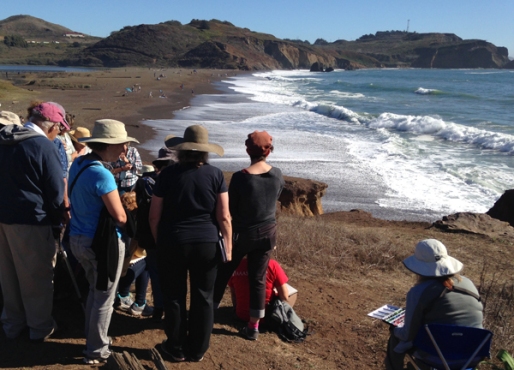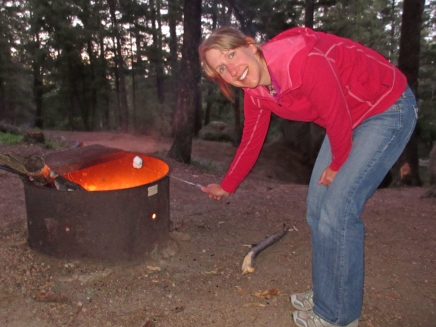Yesterday was Wilbur the Stoma’s birthday! I know the past five years since surgery have contained days and days of incredible adventures, but somehow the time has still gone by in a flash. With the sense of normalcy I now have with my stoma, the memories of those early days are starting to fade.
I love looking back on my blog posts and videos as they help me to connect with who I was in those initial years after surgery, but so much of that time is also a blur. Life sprints ahead when I wish it would meander along in a stroll. It feels like summer was just here, and now the trees are already missing their leaves. Before I know it, I will be celebrating my six-year stomaversary. I want to slow down and savor moments more. Fortunately, I have found a secret for reaching that objective: nature journaling.
I first started nature journaling in the 1990s when my love of keeping diaries and passion for sketching merged and forever changed my relationship with nature. In my journals, I could playfully record natural happenings, curiously ponder what I was witnessing and write down my feelings about it all. At the end of a journaling session, a moment in nature and in my life had been noticed and preserved on the page (and in my memory)! Through my journals, I felt more connected to the natural world and to my soul.
The problem was, despite my best intentions, there were huge chunks of time over the years when I didn’t write or draw in my journals. My post-surgery years were one of those stretches. What the birds, trees and flowers were doing during those moments I cannot say. And that made me sad.
I don’t get along well with unhappiness, so I am in the process of purging other things from my schedule in order to have more personal time to journal. As small details in the lives of box elders, woodpeckers, praying mantises and other flora and fauna are noted on paper, the hectic pace of my own life slows down and feels richer. Over the past two years, I have filled half the pages in a large sketchbook. That is a big improvement from when my nature journal sat mostly untouched after surgery, but I can do better. I aim to fill the second half of that journal in the next few months.
To further build my journaling skills, I attended a three-day workshop in the Marin Headlands of California last weekend with two of my favorite nature journalists, John Muir Laws and Clare Walker Leslie. The experience was beyond-words inspiring. We greeted the birds with our sketchbooks at sunrise, explored the coastline with pens in hand in the afternoon and captured the sunset on our pages. After a short break for dinner, we drew taxidermy mounts in the conference center’s teaching lab until bedtime. At one point during the trip, I spent an entire hour sketching scat, tracks and other signs left by otters in their travel corridor between a pond and canal. Observing and recording the natural world that keenly for three days straight was remarkable and allowed me to slow down and ground myself in the present. Refreshed and inspirited, I left the workshop with a goal of writing and drawing in my nature journal more frequently.
One of the ideas that resonated most strongly for me was Clare Walker Leslie’s practice of recording daily “small wonders.” When I didn’t have time to create an entire journal page of nature observations, simply documenting one exceptional image from the day could help connect me with what was happening in the natural world. Whenever I needed to recall those moments, they would be there waiting for me in the pages. I started my first series of these this week, and I am hooked.
Time can’t actually slow down, and the 365 days until my next stomaversary will come and go whether or not I nature journal. However, closely observing and recording happenings in the natural world helps each day to stand out. It’s hard for life to be a blur when you are looking with focused eyes. I might record tracks in the snow after winter’s first blizzard, the first blooms of spring, a spotted fawn in the tall summer grass and all the things that make the world so breathtakingly beautiful. Five years ago surgery gave me a second chance at life. It’s time I start paying greater attention.
“Ten times a day something happens to me like this – some strengthening throb of amazement – some good sweet empathic ping and swell. This is the first, the wildest and the wisest thing I know: that the soul exists and is built entirely out of attentiveness.”
~ Mary Oliver
































